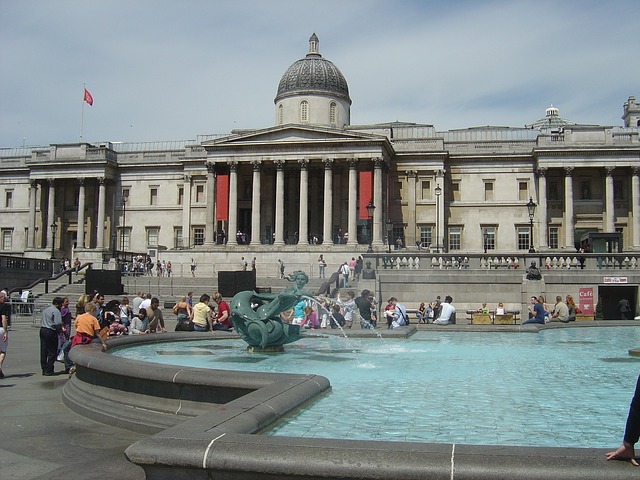Place
In terms of geography and the built environment, the term ‘place’ is used to refer to a point or area on the Earth’s surface. It is commonly used in terms of human and social interactions and indicates somewhere with a boundary that can be ambiguous, as opposed to the term ‘location’ which tends to imply more geometrical certainty, or ‘space’ which is more abstract and tends to be used to refer to a location without human value or meaning having been attached to it.
In contrast to a space, a place can be described as a location ‘created by human experiences’, one that has a ‘meaning’ due to its phenomenology.
The term ‘genius loci’ originates from Roman mythology and refers to the protective spirit of a place. In antiquity, the genius loci was often depicted in religious iconography as a figure holding bowls or a snake. In contemporary usage, it can refer to a place’s distinctive atmosphere. For more information, see Genius loci.
A ‘sense of place’ is the meaning or attachment that is held to particular places, such as a strong identity, which is a social phenomenon studied by cultural geographers, sociologists, urban planners, and so on. ‘Place identity’ (also referred to as ‘urban/local character’) comprises ideas and theories about place and identity within the built environment, in terms of the significance of places for people and how they can impact or influence people’s conceptualisations of self.
Related to this is the conceptual field of psychogeography - an exploration of urban environments that examines their effect on the emotions and behaviour of people. It explores how different places impact upon people psychologically. For more information, see Psychogeography.
Within psychogeography, the French anthropologist Marc Auge coined the term ‘non-place’ to describe a transient space which is largely insignificant and where humans remain anonymous and emotionally detached, such as motorways, hotel rooms, airport departure lounges, shopping centres, and so on.
In contrast, places that are deemed to be of high value can be protected and preserved by designations such as:
- World Heritage Site.
- Area of Outstanding Natural Beauty.
- National Historic Landmark.
- Listed building.
- Sites of Special Scientific Interest.
- Scheduled monuments.
Placemaking is a term used to describe the process by which an area in the public realm is given a unique and attractive character. Placemaking emerged in the 1960s when commentators, theorists and writers began to call for a greater consideration of the individual’s experience of the built environment.
Placemaking is the task of making an area feel attractive to inhabitants, visitors and the wider public and currently tends to be used to describe a stream of work which runs in parallel with the technical and practical work of designing the built environment.
For more information, see Placemaking.
NB Conservation Principles, Policies and Guidance, For the sustainable management of the historic environment, Published by Historic England in 2008, suggests that: 'The term ‘place’ goes beyond physical form, to involve all the characteristics that can contribute to a ‘sense of place’. It embraces the idea that places, of any size from a bollard to a building, an historic area, a town, or a region, need to be understood and managed at different levels for different purposes; and that a particular geographical location can form part of several overlapping ‘places’ defined by different characteristics.'
It suggests that the significance of a place is: ‘The sum of the cultural and natural heritage values of a place, often set out in a statement of significance.’
[edit] Related articles on Designing Buildings
- Area.
- Built environment.
- Genius loci.
- Land.
- Location.
- Masterplanning.
- Neighbourhood planning.
- Phenomenology.
- Place-shaping: a shared ambition for the future of local government.
- Placemaking.
- Property.
- Psychogeography.
- Public realm.
- Public space.
- Region.
- Setting.
- Society.
- Space.
- Territory.
- Town planning.
- Types of land.
- Types of place.
- Zeitgeist.
Featured articles and news
RTPI leader to become new CIOB Chief Executive Officer
Dr Victoria Hills MRTPI, FICE to take over after Caroline Gumble’s departure.
Social and affordable housing, a long term plan for delivery
The “Delivering a Decade of Renewal for Social and Affordable Housing” strategy sets out future path.
A change to adoptive architecture
Effects of global weather warming on architectural detailing, material choice and human interaction.
The proposed publicly owned and backed subsidiary of Homes England, to facilitate new homes.
How big is the problem and what can we do to mitigate the effects?
Overheating guidance and tools for building designers
A number of cool guides to help with the heat.
The UK's Modern Industrial Strategy: A 10 year plan
Previous consultation criticism, current key elements and general support with some persisting reservations.
Building Safety Regulator reforms
New roles, new staff and a new fast track service pave the way for a single construction regulator.
Architectural Technologist CPDs and Communications
CIAT CPD… and how you can do it!
Cooling centres and cool spaces
Managing extreme heat in cities by directing the public to places for heat stress relief and water sources.
Winter gardens: A brief history and warm variations
Extending the season with glass in different forms and terms.
Restoring Great Yarmouth's Winter Gardens
Transforming one of the least sustainable constructions imaginable.
Construction Skills Mission Board launch sector drive
Newly formed government and industry collaboration set strategy for recruiting an additional 100,000 construction workers a year.
New Architects Code comes into effect in September 2025
ARB Architects Code of Conduct and Practice available with ongoing consultation regarding guidance.
Welsh Skills Body (Medr) launches ambitious plan
The new skills body brings together funding and regulation of tertiary education and research for the devolved nation.
Paul Gandy FCIOB announced as next CIOB President
Former Tilbury Douglas CEO takes helm.
UK Infrastructure: A 10 Year Strategy. In brief with reactions
With the National Infrastructure and Service Transformation Authority (NISTA).























